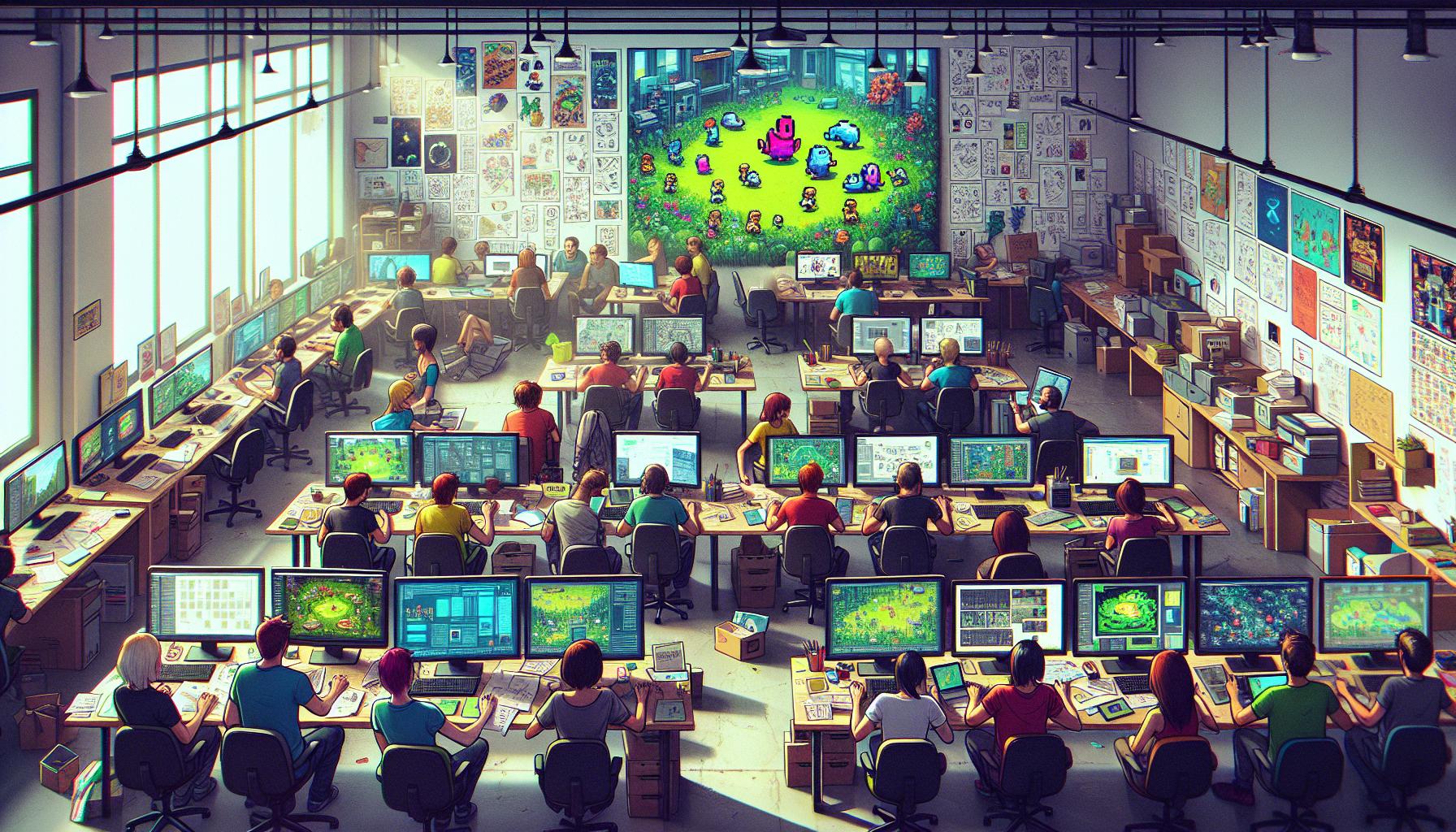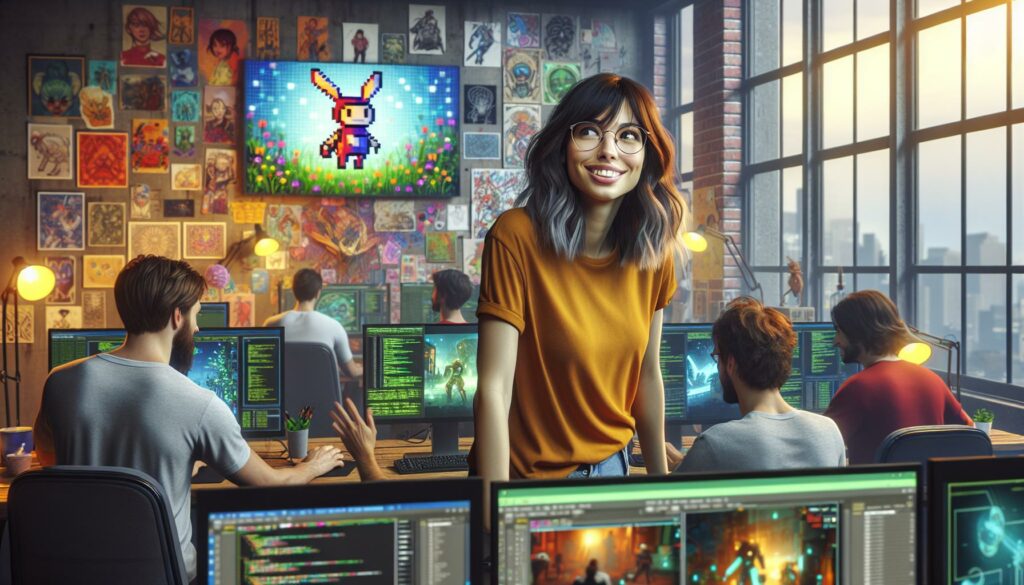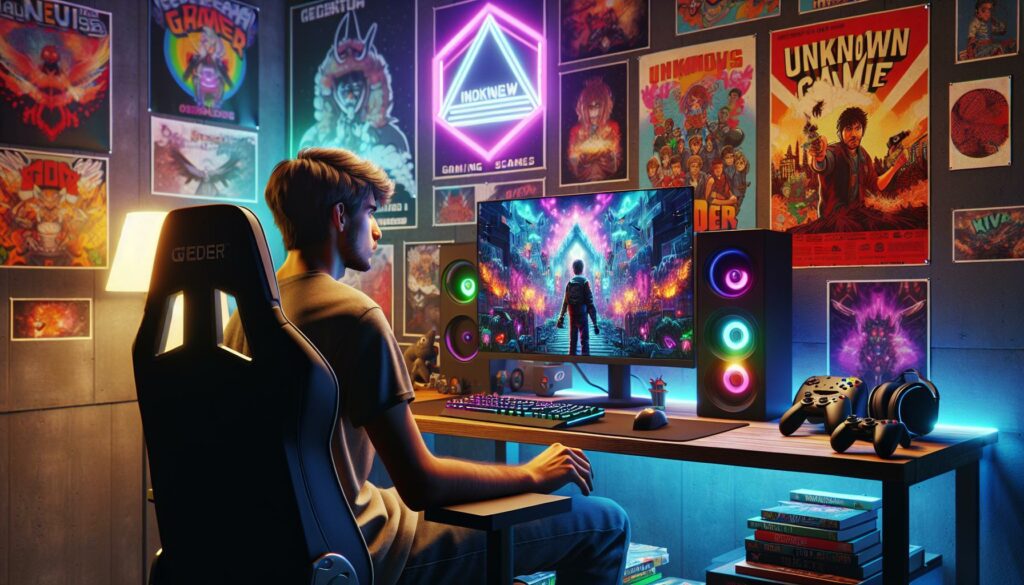As a passionate gamer and industry observer, I’ve watched indie games transform the gaming landscape over the past decade. These independently developed titles have revolutionized how we experience and think about video games, bringing fresh perspectives and innovative gameplay mechanics to players worldwide.
The term “indie games” might seem straightforward, but it’s evolved significantly since its inception. From humble beginnings in developers’ garages to multimillion-dollar success stories like Stardew Valley and Minecraft, indie games have carved out their unique space in the gaming industry. I’ve seen countless debates about what truly qualifies as an indie game, and today I’ll help clear up the confusion surrounding this dynamic gaming category.
Key Takeaways
- Indie games are video games created by small teams (1-20 people) without major publisher funding, emphasizing creative freedom and independent development.
- Development budgets typically range from $50K-$500K, significantly lower than AAA games’ budgets of $10M-$200M+, leading to innovative solutions and focused game design.
- Distribution primarily occurs through digital platforms like Steam, itch.io, and Epic Games Store, with developers earning higher revenue shares compared to traditional publishing.
- Success stories like Minecraft, Stardew Valley, and Hollow Knight demonstrate that indie games can achieve significant commercial success despite limited resources.
- The future of indie game development is being shaped by emerging technologies like AI, blockchain, and cloud gaming, along with new monetization models through subscription services.
What Does Indie Games Mean
Independent (indie) games are video games created by individuals or small teams without major publisher funding or support. These self-published titles maintain creative control throughout development while operating with limited financial resources.
The core characteristics of indie games include:
- Independent funding through personal savings, crowdfunding or small investors
- Creative freedom in design, storyline & artistic direction
- Small development teams of 1-20 people
- Direct distribution through digital platforms like Steam, itch.io & Epic Games Store
Here’s a comparison of typical indie game vs. AAA game development:
| Aspect | Indie Games | AAA Games |
|---|---|---|
| Team Size | 1-20 people | 100+ people |
| Budget | $50K-$500K | $10M-$200M+ |
| Development Time | 1-3 years | 3-5 years |
| Publisher Control | Minimal/None | Extensive |
| Distribution | Digital platforms | Multiple channels |
Notable indie games demonstrate the diversity in this category:
- Stardew Valley – Created by a single developer over 4 years
- Hollow Knight – Developed by a team of 3 people
- Among Us – Started with a team of 3 developers
- Undertale – Solo-developed with minimal external support
These defining elements separate indie games from traditional publisher-backed titles, creating a distinct category in the gaming industry that emphasizes creative independence over commercial constraints.
The History of Independent Game Development

Independent game development emerged in the 1970s when individual programmers created games for early home computers. This grassroots movement laid the foundation for today’s thriving indie game scene.
Early Days of Indie Gaming
Independent game development started with programmers distributing games through mail-order catalogs shareware disks in the 1980s. Platforms like the ZX Spectrum Commodore 64 enabled creators to self-publish games without publisher involvement. Notable early indie successes include Cave Story (2004) Kingdom of Through (1987) which demonstrated the potential of solo developers. The shareware model popularized by id Software with Doom (1993) established a direct-to-consumer distribution approach that influenced modern indie publishing.
| Platform | Launch Year | Impact on Indie Games |
|---|---|---|
| Steam | 2004 | First major digital PC game platform |
| Xbox Live Arcade | 2005 | Brought indies to consoles |
| App Store | 2008 | Enabled mobile indie development |
| Itch.io | 2013 | Focused on indie game distribution |
| Discord Store | 2018 | Community-driven game sales |
Key Characteristics of Indie Games

Independent games feature distinct traits that set them apart from traditional AAA titles in the gaming industry. These defining characteristics create unique gaming experiences through innovative approaches to development constraints.
Creative Freedom and Innovation
Indie developers exercise complete creative control over their projects, enabling unconventional gameplay mechanics and narrative choices. Games like Undertale demonstrate this freedom through its unique combat system that emphasizes player choice in avoiding conflicts. Indie creators explore experimental concepts such as Papers, Please’s documentary-style gameplay or Braid’s time-manipulation mechanics without corporate oversight or market pressure constraints.
Small Development Teams
Indie games typically emerge from teams of 1-5 developers who handle multiple aspects of game creation simultaneously. For example, Stardew Valley’s Eric Barone single-handedly created all aspects of the game including programming, art, music & story over four years. Small teams foster direct communication, rapid decision-making & personal investment in project outcomes, resulting in cohesive creative visions.
Limited Budgets and Resources
Indie games operate on modest budgets ranging from $50,000 to $500,000 compared to AAA budgets of $20-100 million. These constraints drive innovation through:
- Strategic resource allocation focusing on core gameplay elements
- Creative workarounds like pixel art aesthetics reducing graphics costs
- Digital-only distribution eliminating physical production expenses
- Community-driven marketing through social media platforms
- Early access programs generating development funding
The limited resources often lead to focused game design prioritizing specific features or mechanics rather than attempting broad-scope development.
The Impact of Indie Games on the Gaming Industry

Independent game developers transformed the video game industry through innovative gameplay mechanics, diverse storytelling approaches, and alternative distribution methods. This shift reshaped how games are created, distributed, and consumed.
Challenging Traditional Publishing Models
Indie developers pioneered digital distribution platforms that bypassed traditional publishing gatekeepers. Steam’s introduction of direct publishing tools in 2012 enabled 7,500+ indie games to reach the market annually. Digital storefronts like Epic Games Store, GOG, and Itch.io created competitive revenue-sharing models, with developers earning up to 88% of sales revenue compared to the traditional 30% publisher split. Notable examples include:
- Discord’s verified server programs connecting developers directly with players
- Patreon-supported development cycles funding games like Dwarf Fortress
- Early access programs allowing games like Hades to gather community feedback
- Crowdfunding platforms raising $200M+ for indie games on Kickstarter alone
Influencing Mainstream Game Design
Indie games introduced experimental mechanics that larger studios later adopted. Minecraft’s procedural generation techniques influenced games like No Man’s Sky. Other industry-shifting impacts include:
- Roguelike elements from The Binding of Isaac appearing in major releases
- Narrative-driven experiences like Gone Home inspiring AAA storytelling
- Pixel art aesthetics from Stardew Valley influencing visual design trends
- Among Us popularizing social deduction mechanics in mainstream gaming
- Risk of Rain’s progression systems inspiring looter-shooter genres
These innovations led to collaborative partnerships between indie and AAA studios, with companies like Microsoft acquiring indie developers like Mojang for $2.5B and Double Fine for $100M.
Popular Examples of Successful Indie Games
Indie games have achieved remarkable commercial success through innovative gameplay mechanics distinctive art styles. These games demonstrate the potential of independent development to create compelling experiences that resonate with millions of players.
Breakthrough Indie Titles
Minecraft emerged as the defining indie success story, selling over 238 million copies since its release in 2011. Notable breakthrough titles include:
- Stardew Valley: Created by solo developer Eric Barone generated $1 billion in revenue through its farming simulation gameplay
- Hollow Knight: Team Cherry’s metroidvania masterpiece sold 3.5 million copies across platforms
- Among Us: InnerSloth’s social deduction game reached 500 million active users in 2020
- Undertale: Toby Fox’s RPG sold over 1 million copies through its unique combat system
- Celeste: Matt Makes Games’ precision platformer surpassed 1 million sales
Commercial Success Stories
Independent games have demonstrated significant financial success in the gaming market. Here’s a breakdown of notable achievements:
| Game Title | Revenue | Units Sold | Development Cost |
|---|---|---|---|
| Minecraft | $3.5 billion | 238 million | $10,000 |
| Stardew Valley | $1 billion | 20 million | $70,000 |
| Fall Guys | $185 million | 11 million | $500,000 |
| Terraria | $150 million | 44 million | $15,000 |
| Cuphead | $250 million | 6 million | $7 million |
- Digital Distribution: Steam platform sales account for 75% of indie game revenue
- Cross-Platform Success: Nintendo Switch indie games generate 30% higher revenue than other consoles
- Mobile Integration: Among Us earned $86 million through mobile purchases
- Community Building: Discord communities drive 25% of indie game sales through word-of-mouth
- Early Access: 40% of successful indie titles utilize early access programs for funding
The Future of Indie Game Development
Advanced technologies make indie game development increasingly accessible through platforms like Unity Engine Cloud Build GameMaker Studio. Cross-platform development tools enable indie developers to release games simultaneously on multiple platforms including PC mobile consoles.
The emergence of Web3 technologies introduces new opportunities for indie developers:
- Blockchain integration creates player-owned in-game assets
- NFT marketplaces establish additional revenue streams
- Decentralized funding models provide alternative financing options
- Play-to-earn mechanics generate player incentives
Key market trends shaping indie development include:
| Trend | Impact Statistics |
|---|---|
| Mobile Gaming Growth | 45% of indie revenue from mobile platforms |
| Cloud Gaming | 23% increase in cloud-based indie titles |
| VR/AR Development | 15% of indie studios exploring XR projects |
| AI Integration | 38% using AI tools for development |
Emerging distribution models transform indie game monetization:
- Subscription services like Xbox Game Pass provide steady revenue
- Early access programs generate development funding
- Community-driven crowdfunding platforms expand financing options
- Revenue sharing improvements on major platforms increase profitability
The integration of artificial intelligence enhances development capabilities:
- Procedural content generation creates dynamic game worlds
- AI-powered NPCs deliver realistic character interactions
- Automated testing reduces development time
- Machine learning optimizes game balance performance
- Open-source tools reduce entry barriers
- Asset marketplaces streamline resource creation
- Cloud-based version control enables remote collaboration
- Community feedback platforms accelerate iteration cycles
Unique Innovation
Indie games represent more than just a category in the gaming industry – they’re a testament to creative freedom and innovation. I’ve seen how these small-scale projects have revolutionized gaming by introducing unique mechanics and storytelling approaches that larger studios now emulate.
From humble beginnings to billion-dollar successes indie games continue to push boundaries and challenge traditional gaming norms. As technology advances and new platforms emerge I’m confident that indie developers will keep leading the charge in gaming innovation.
The future of indie games looks brighter than ever. With improved development tools emerging technologies and supportive communities these creative endeavors will undoubtedly continue to shape the future of gaming for years to come.



